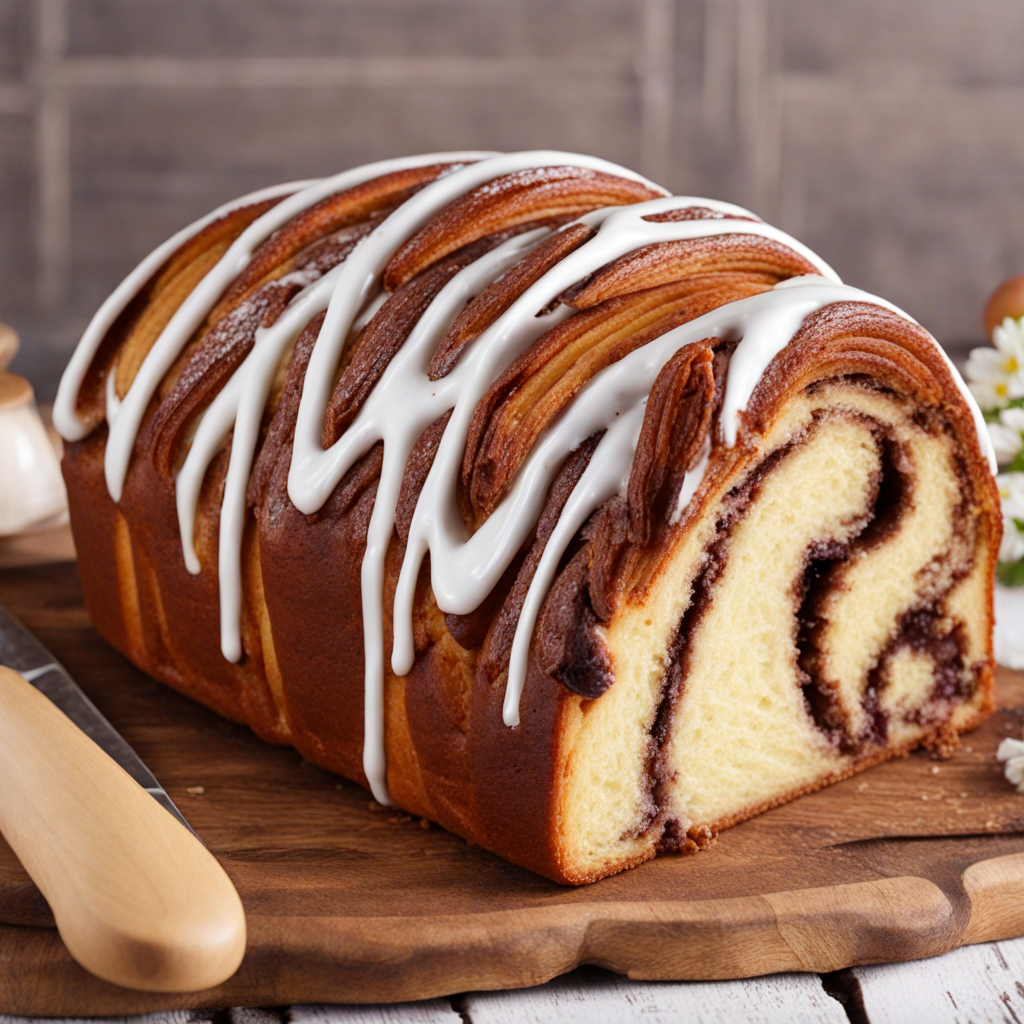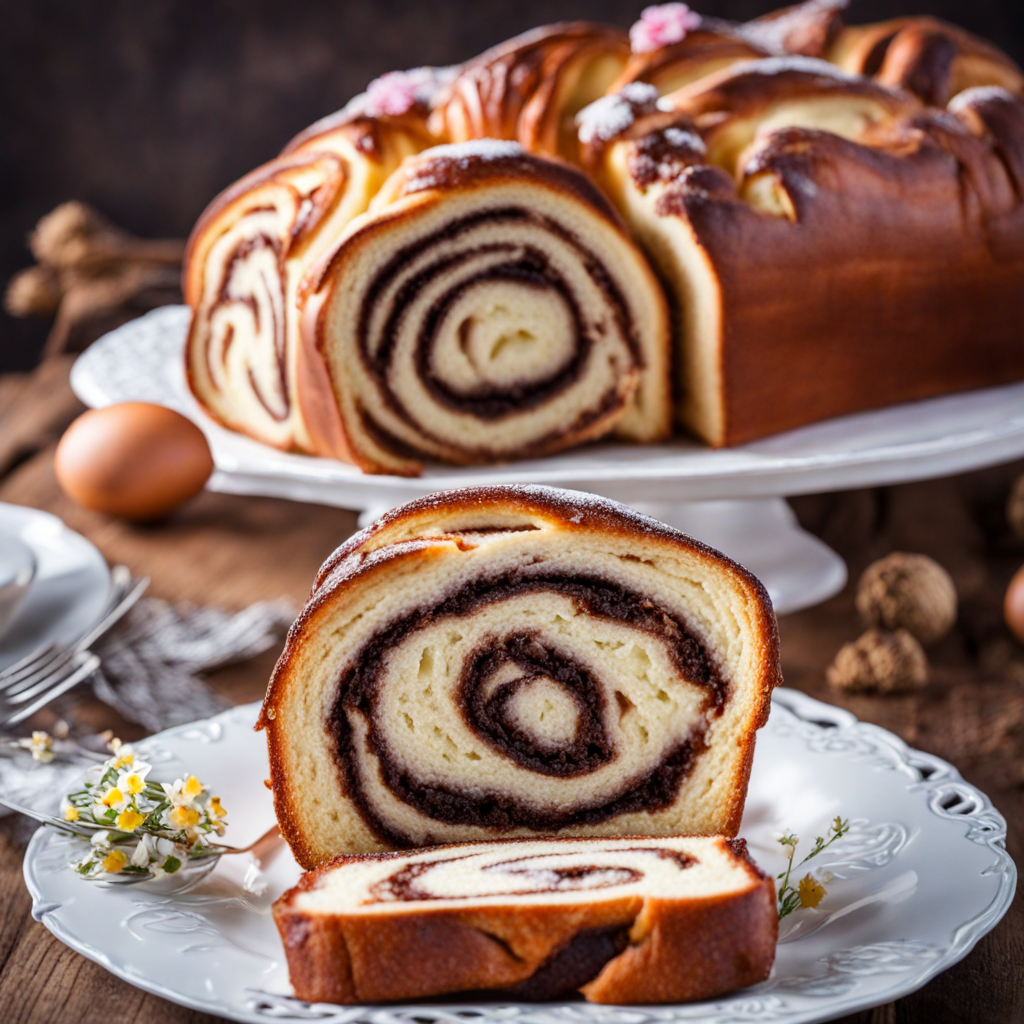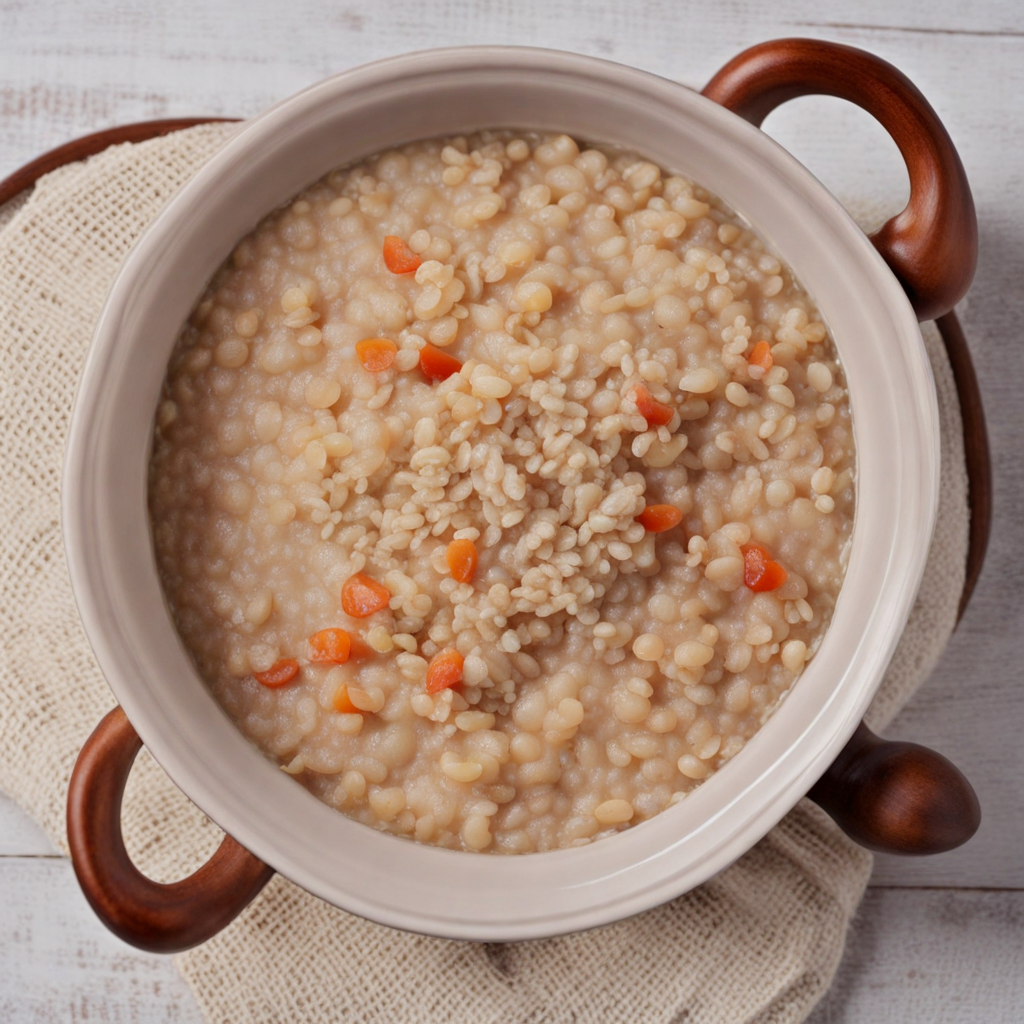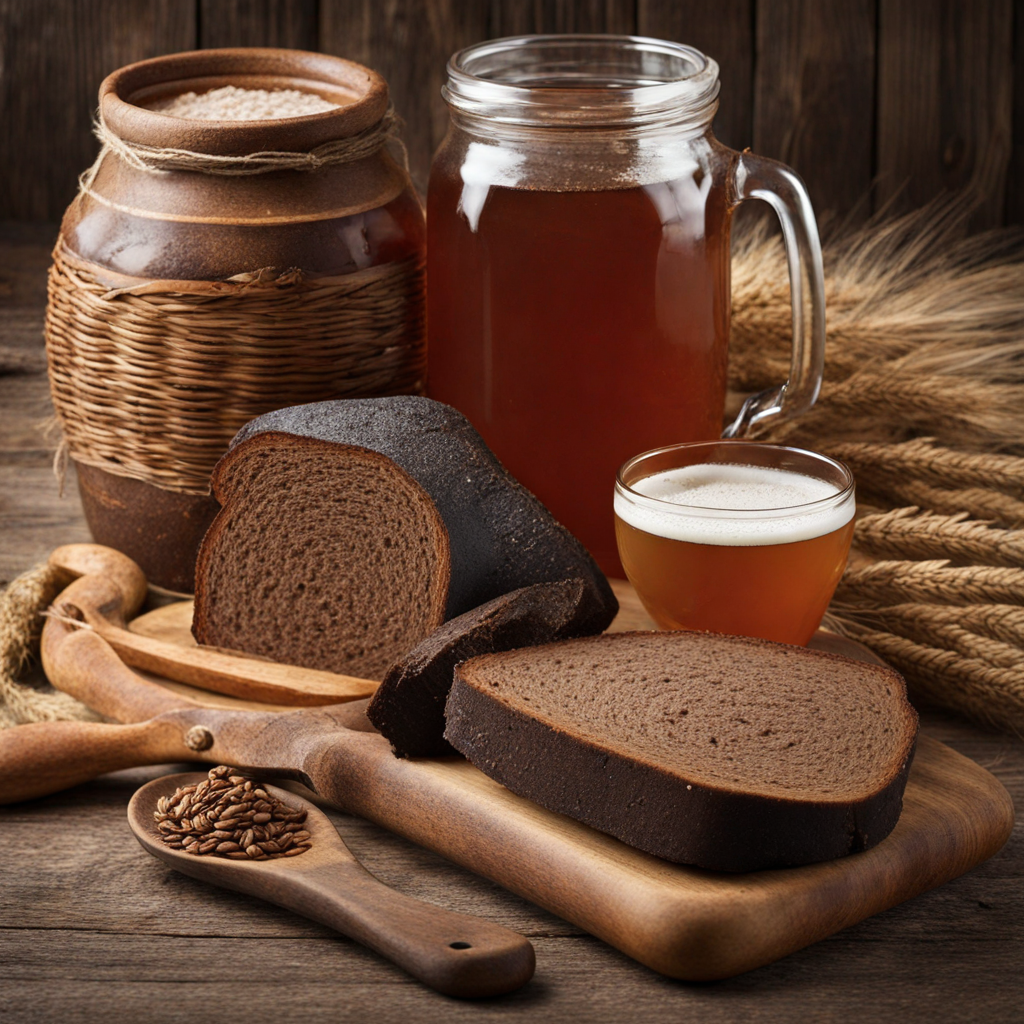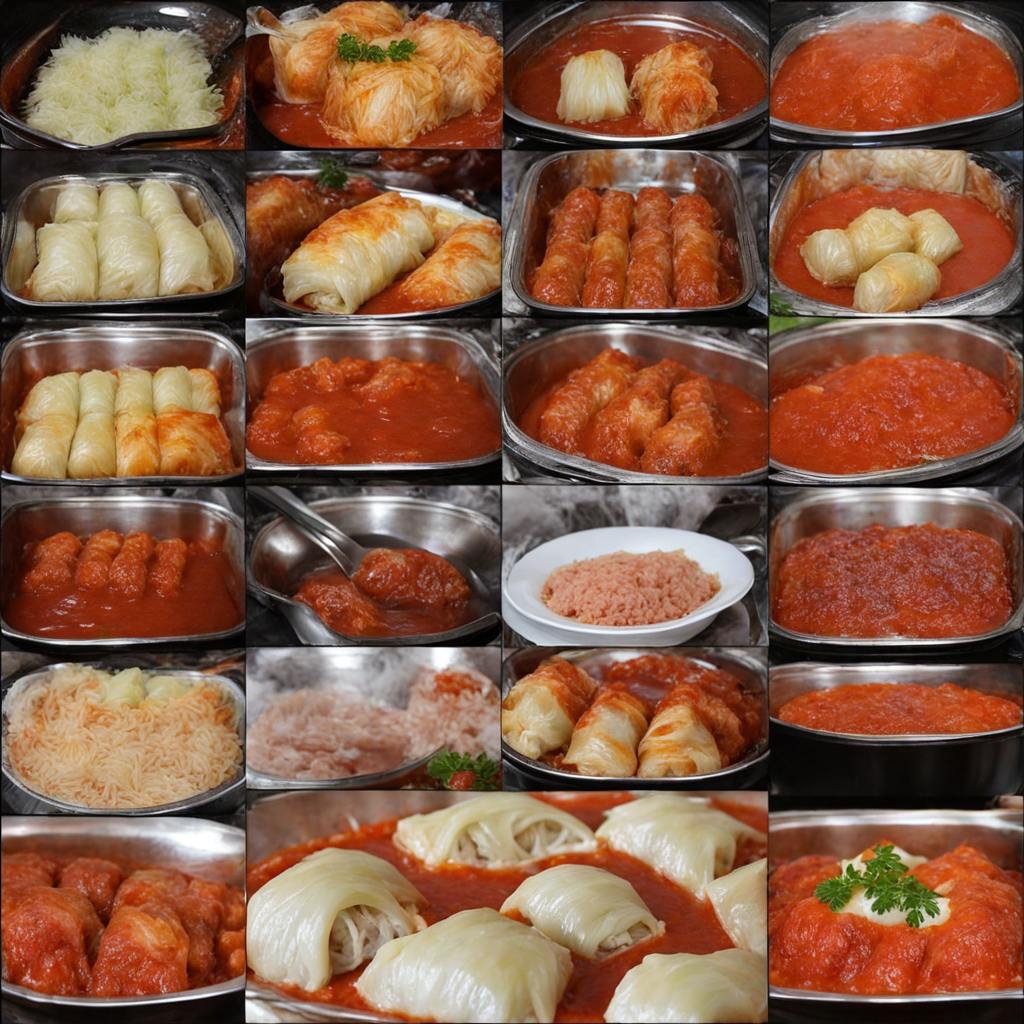Babka
Babka is a delightful and rich pastry that hails from Ukraine, renowned for its braided shape and sweet, soft texture. This traditional bread is made from a sweet yeast dough that is often enriched with eggs and butter, giving it a tender crumb and a slightly sweet flavor. The dough is typically rolled out and layered with a variety of fillings, such as chocolate, cinnamon, or fruit preserves, before being braided and baked to perfection. The result is a visually stunning loaf that is as inviting to the eyes as it is to the palate. As the babka bakes, the aroma of the sweet dough fills the air, promising a treat that is both comforting and indulgent. When you slice into a freshly baked babka, you'll discover its moist interior swirled with luscious filling, creating a beautiful marbled effect. The crust is golden and slightly crisp, providing a delightful contrast to the soft, pillowy inside. Each bite offers a harmonious blend of flavors, whether you choose a classic chocolate babka or one infused with fragrant spices and fruits. Babka is often enjoyed as a special treat during festive occasions, but its charm makes it suitable for any time of day. Whether served warm with a cup of coffee for breakfast or as a sweet ending to a meal, this Ukrainian pastry is a celebration of texture and taste. Its versatility allows for endless variations, making it a beloved choice for those looking to explore new flavors and appreciate the rich culinary heritage of Ukraine.
How It Became This Dish
The History of Бабка: A Ukrainian Culinary Treasure Origins and Etymology The word "бабка" (babka) holds a special place in the hearts and kitchens of many Ukrainians. Rooted in the Slavic languages, the term "бабка" is derived from "баба," which means "grandmother" or "old woman." This etymological connection reflects the traditional role of grandmothers as the custodians of culinary heritage, passing down recipes and cooking techniques through generations. The name also evokes warmth and nostalgia, suggesting that this dish is not merely food but a vessel of memory, love, and family bonds. Babka, in its earliest forms, can be traced back to the 17th century in Eastern Europe, particularly in regions such as Ukraine and Poland. The dish is often associated with Jewish culinary traditions, where it became a staple in various Eastern European Jewish communities. The Jewish version of babka, typically sweet and made with rich dough swirled with chocolate or cinnamon, has garnered significant attention and popularity in recent years, particularly in the United States. Cultural Significance Babka holds profound cultural significance in Ukraine and beyond. It is more than just a dessert; it is a symbol of togetherness, celebration, and continuity. Traditionally, babka is served during important family gatherings and religious celebrations, including Easter and Christmas. Its preparation often involves multiple family members, reinforcing communal ties and the transmission of culinary knowledge. The act of making babka can become a ritual, a way for families to honor their ancestors and keep traditions alive. In Ukrainian culture, food plays a pivotal role in social gatherings and festivities. Babka often graces the tables during celebrations, embodying the spirit of hospitality and generosity that is central to Ukrainian identity. The dish is typically baked in a tall, cylindrical shape, resembling a loaf or cake, and is often adorned with a sweet glaze or powdered sugar, making it visually appealing and inviting. Development Over Time As babka evolved over the centuries, it absorbed various influences from neighboring cultures, reflecting the rich tapestry of Ukraine's history. The interaction between different ethnic groups in the region contributed to the diversification of babka recipes. While the basic elements of flour, sugar, eggs, and yeast remained constant, variations emerged based on local ingredients and culinary practices. In the 19th century, as Ukrainian society underwent significant changes due to industrialization and urbanization, the way babka was prepared and consumed also transformed. The rise of bakeries in urban areas led to the commercialization of babka, making it more accessible to the general public. Bakeries began to produce their versions of babka, often experimenting with flavors and fillings. Chocolate, nuts, and fruit became popular additions, giving birth to new interpretations of the classic recipe. The Jewish community played a crucial role in the popularization of babka beyond Ukraine. Jewish immigrants brought their recipes to America in the late 19th and early 20th centuries, where babka became an integral part of Jewish-American cuisine. In this new context, babka was often filled with rich chocolate or cinnamon, and its popularity soared, particularly in urban centers such as New York City. The dish became a symbol of Jewish identity, reflecting the community's resilience and adaptability in a new land. In the latter half of the 20th century, babka experienced a resurgence in popularity as food enthusiasts and chefs began to explore traditional recipes. The rise of the artisanal food movement fostered a renewed interest in homemade, authentic culinary practices. Bakeries specializing in traditional babka began to emerge, celebrating the dish’s rich history while experimenting with contemporary flavors and techniques. Modern Interpretations and Global Influence Today, babka continues to be celebrated and reinvented in various culinary circles around the world. While traditional Ukrainian babka is still cherished, contemporary bakers are experimenting with new ingredients and flavor combinations, pushing the boundaries of this beloved dish. From salted caramel and matcha to vegan and gluten-free adaptations, babka has transcended its traditional roots, appealing to a diverse audience of food lovers. Social media has played a significant role in the resurgence of babka's popularity. Platforms like Instagram and TikTok have allowed home bakers and professional chefs to showcase their creations, inspiring a new generation to try their hand at making babka. Tutorials, recipes, and mouthwatering images have spread quickly, leading to a global fascination with this delightful dessert. In Ukrainian culture, babka remains a cherished symbol of heritage. Many families still adhere to traditional recipes passed down through generations, ensuring that the cultural significance of the dish endures. Contemporary Ukrainian bakers are also embracing the modern food movement while staying true to their roots, preserving the essence of babka while infusing it with new life. Conclusion Babka is much more than just a sweet bread; it is a rich tapestry of history, culture, and familial love that transcends borders and generations. As it has evolved over time, it has retained its status as a beloved dish in Ukraine and among the Jewish diaspora. Its journey from the kitchens of grandmothers to the contemporary culinary scene is a testament to the enduring power of food as a connector of people and traditions. Whether enjoyed during a family gathering, a holiday celebration, or simply as a treat for oneself, babka continues to evoke the warmth of home and the comfort of shared experiences. It stands as a delicious reminder of the importance of preserving culinary traditions while embracing innovation, ensuring that this treasured dish will remain a staple in kitchens around the world for generations to come.
You may like
Discover local flavors from Ukraine


